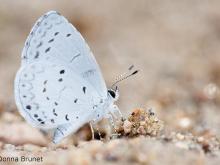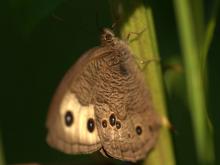Butterflies and Moths
Media

Species Types
Scientific Name
Celastrina ladon
Description
The spring azure is among the first butterflies of the year. It occurs in a variety of habitats. The early spring appearance helps you identify it.
Media

Species Types
Scientific Name
Celastrina neglecta
Description
Formerly considered the same species as the spring azure, the summer azure can be identified, in large part, by the season when you see it.
Media

Species Types
Scientific Name
Libytheana carinent
Description
Most of us identify butterflies by their color patterns, but you can ID the American snout by its long “nose.”
Media

Species Types
Scientific Name
Euphydryas phaeton ozarkae
Description
The Baltimore checkerspot is unforgettable. In Missouri it is locally abundant in the eastern Ozarks, but rare elsewhere.
Media

Species Types
Scientific Name
Junonia coenia
Description
The common buckeye is one of Missouri’s prettiest butterflies, but it doesn’t overwinter here. Instead, migrants arrive in late spring and early summer.
Media

Species Types
Scientific Name
Cercyonis pegala
Description
Common wood nymphs vary by region. Some have a yellow area on the forewing containing two eyespots. Others may have the yellow area reduced to a yellow circle around each eyespot.
See Also


Media

Species Types
Scientific Name
About 1,500 species in North America north of Mexico
Description
Adult caddisflies are mothlike. Their larvae are aquatic and build portable, protective cases out of local materials, including grains of sand, bits of leaves and twigs, and other debris.
Media

Species Types
Scientific Name
Corydalus cornutus
Description
Adult eastern dobsonflies are huge and mothlike, with large wings and a weak, fluttery flight. The fiercely predaceous aquatic larvae, called hellgrammites, are well-known to anglers, who often use them as bait.
About Butterflies and Moths in Missouri
Butterflies, skippers, and moths belong to an insect order called the Lepidoptera — the "scale-winged" insects. These living jewels have tiny, overlapping scales that cover their wings like shingles. The scales, whether muted or colorful, seem dusty if they rub off on your fingers. Many butterflies and moths are associated with particular types of food plants, which their caterpillars must eat in order to survive.





















